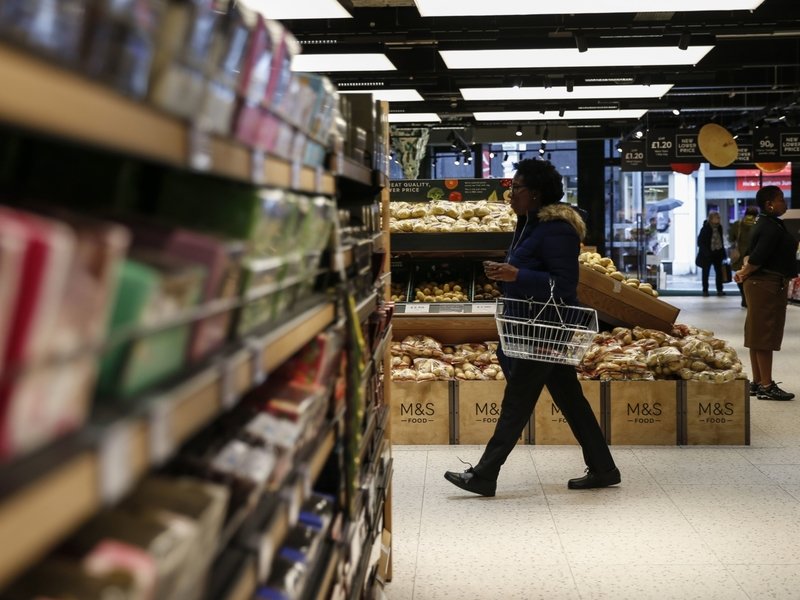“You only have a couple of outside wholesalers supplying thousands of small New York City stores and they have insufficient square footage per store — about 1/7th to 1/10th the average U.S. supermarket in the suburbs,” said Burt P. Flickinger III, managing director of the retail consulting firm Strategic Resource Group. “The New York City stores are too small based on high rents and limited real estate availability and their shelves are so small they don’t have any holding capacity.”
Shortages could be particularly acute in New York because so many of the grocers, including Westside Market, Key Foods, and D’Agostino’s, are independent or family owned and rely on outside wholesalers.
“There is so much competition between grocery stores in the U.S.,” said Miguel Gómez, Associate Professor of Applied Economics at Cornell University, in a conversation with Crain’s. “And most supermarket companies are self-distributing, they own their own wholesale operation, but in New York City you have more independent smaller grocery stores, so they tend to depend more on wholesalers.”
Flickinger told Crain’s that these outsider wholesalers have limited inventory and that most ship their products long distance to supply many different stores. He suspects these outside wholesalers are facing “unprecedented pressure in supplying thousands of New York City stores on an emergency basis.”
As the demand for products increases, Gomez believes the food supply chain could also become disrupted because a significant amount of food consumed by New Yorkers comes from other countries, and there may be restrictions on international trade because of the coronavirus.
“If there is any disruption in the supply chain, then supermarkets have to pay more, and they will probably pass that cost onto their customers in higher prices,” he said.
But other food industry experts believe the concerns about higher prices and lack of supplied goods are unwarranted, especially because the food business industry prepares for such events.
“Retailers are working with manufacturers who are looking at ways they can shore up their supply chain, said Doug Baker, vice president of industry relations at the Food Industry Association.
Even so, Baker told Crain’s that wholesalers are seeing three to four times their normal amount of orders, a figure that could result in both shortages and gluts.
On the ground at New York City supermarkets, owners haven’t seen too much disruption yet. If anything, they’ve seen increased business.
“I haven’t seen anything particular in food. More people in my store means I’m going to have more sales,” said Nicholas D’Agostino III, president of the New York Food Group and owner of D’Agostino Supermarket.
“Our value has obviously gone up as customers have stocked up on product, but they are traditionally grocery items that are very low margin,” said Avi Kaner, owner of Morton Williams, who added that he’s seen consumers buy primarily water, canned fruits, soups, tuna fish and shelf stable milk during the past week.
More than food products, it is disinfectants and cleaning supplies that have been the most sought-after items during the coronavirus crisis.
“Right now, the biggest thing is anything that’s a disinfectant,” D’Agostino said “Gallons of water aren’t going quite as fast as the wipes and disinfectant. We’re having long term ‘outs’ from our suppliers, and I have three or four places we can get them from.”
“The only real categories where we’ve seen rationing and having orders scrapped and not fulfilled is in the sanitary products,” said Kaner. “We run out of water but we’re able to get it replenished the next day. But when it comes to the sanitizing products, it might be a month or even longer before these supplies come back in a reliable manner.”
“A couple weeks ago we placed massive orders for these items, spread them across our stores, and they sold out in a day or two; people just grab them immediately,” he said. “We’ve had to think outside the box.”
“It’s very similar to what we experienced prior to an expected snowstorm, the difference here being there’s no end in sight,” Kaner said. “You know the storm is arriving over the next day or two. Here the uncertainty is really creating anxiety with customers. They fear there might be a situation of quarantine or public transit may be disrupted.”
“There is so much uncertainty,” said Gómez. “Everything is speculative because it’s just too soon to say.”


